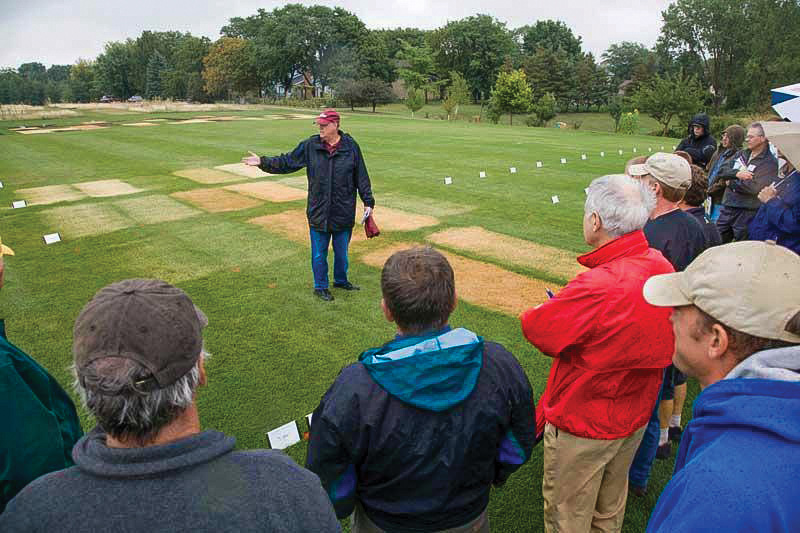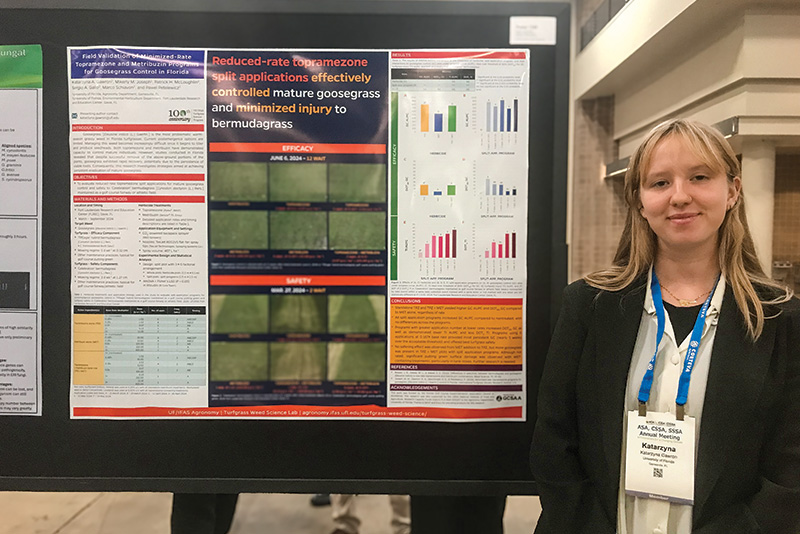
University of Minnesota posts 2024 turf trial results
In July, the University of Minnesota’s Turfgrass Science Program posted all 2024 turfgrass research plot data on the 2024 cultivar evaluation page (https://turf.umn.edu/cultivar-data-2024). Results are posted from three types of trials, and results are uploaded in a new, accessible format. This includes several trials sponsored by the National Turfgrass Evaluation Program. These trials are also replicated throughout the U.S. You can find historical NTEP data on the NTEP website (https://ntep.org). You can also try UMN’s new Turfgrass Trial Explorer (https://maps.umn.edu/ntep/).
The program has several trials that are primarily used to test plant material from the UMN breeding program. In these trials, you may see entries that only have a number as an identifier (as opposed to a name); this is because these entries are only in the early testing phase. The third type of trial the program has are the Cooperative Turfgrass Breeder’s Trials (https://www.ctbt-us.info), which include germplasm from multiple private breeding companies that is being tested at several locations across the U.S. Scientists noted that oftentimes entries that perform well in the CTBT will later be tested in an NTEP trial. The program also has a guide on how to interpret cultivar evaluation results (https://turf.umn.edu/news/2018-turfgrass-cultivar-data-posted).
— D.P.

Field validation of minimized-rate topramezone, metribuzin programs for goosegrass control in Florida
Goosegrass [Eleusine indica (L.) Gaertn.], an annual warm-season grassy weed, poses significant challenges across the southern U.S. Currently, control options are severely limited. Previous studies found topramezone effective against mature goosegrass. However, reports from Florida indicate that persistent removal may depend on depleting the plants’ recuperative capacity from roots over time. Greenhouse research has demonstrated promising results from split application programs using reduced topramezone base rate, but validation under field conditions is required. Moreover, topramezone is often combined with metribuzin for improved control and safety. Therefore, this study evaluated standalone or combined topramezone and metribuzin at effective rates of 0.088 ounces active ingredient per acre (6.13 grams active ingredient per hectare) and 3 ounces active ingredient per acre (210.16 grams active ingredient per hectare), respectively, applied once or equally divided into two, four or six biweekly applications for the control of mature goosegrass populations and safety to bermudagrass [Cynodon dactylon (L.) Pers. × C. transvaalensis Burtt Davy] turf.
Topramezone alone and in combination with metribuzin yielded higher goosegrass control (GC) area under progress curve (AUPC) and days over threshold (DOT) >80% GC (DOT80 GC) compared to metribuzin alone. Generally, programs with more applications at lower rates increased DOT80 GC while causing lower and less-persistent turfgrass injury. Six applications at 0.167 × base rate provided the most persistent goosegrass control with optimal turfgrass safety. No safening effect was observed with the addition of metribuzin to topramezone, and plots treated with split topramezone + metribuzin programs showed increased goosegrass presence.
These findings suggest that split-rate programs of standalone topramezone may be effectively integrated into goosegrass management; however, further research is required for validation. Future studies will investigate alternative tank-mix components for these topramezone programs and explore alternative approaches for incorporating metribuzin to minimize turfgrass injury potential. This work was funded by the Florida GCSA and the USDA National Institute of Food and Agriculture Research Capacity Funds.
— Katarzyna A. Gawron (katarzyna.gawron@ufl.edu); Patrick H. McLoughlin; Mikerly M. Joseph; Sergio A. Gallo; Marco Schiavon, Ph.D.; and Pawel Petelewicz, Ph.D.; University of Florida